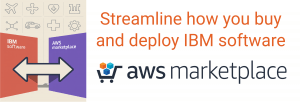Building ELO PUB Templates
This service primarily benefits organizations (or programs) using traditional or waterfall processes and who are new to ELM, or those who are looking to accelerate its successful deployment.
IBM Engineering Optimization – Publishing Essentials
This course provides an introduction to Rational Publishing Engine. It teaches participants how to generate documents that pull information from various sources, and how to design document templates to support the publishing needs in their company.
Engineering Requirements Management DOORS Introduction
This course is for new DOORS users. It introduces basic DOORS concepts and functionality. It includes hands-on exercises that will teach you to create, edit, manipulate, and analyze requirements data in DOORS.
Engineering Requirements Management DOORS Intermediate
This course builds on the content learned in the IBM DOORS Introduction course. It is designed for those who will be in the role of team lead or project manager, or who want to learn more about advanced DOORS end-user functionality. It discusses creating and structuring DOORS projects, defining linking relationships and attributes, setting access permissions, and managing change. It also discusses external linking, working with spreadsheets, and applying configuration management strategies to DOORS data.
Engineering Requirements Management DOORS – DXL Training
This course teaches experienced IBM Engineering Requirements Management DOORS users the basic principles of writing and applying DXL extension language to customize DOORS.
Defining and Managing Requirements with Use Cases
All development methodologies are based upon stakeholder, user, system, software and hardware requirements and align with the IIBA Business Analyst Body of Knowledge. This topic covers how to employ use cases effectively to define requirements and use them throughout the development cycle, including elicitation and testing. This course is the first in a series that presents industry best practices for requirements definition and management.
Requirements Management Basics
Clear requirements are essential to project success. This topic covers requirements language and modeling techniques, 10 best practices for specifying requirements, and how to validate requirements and manage changes. This course is the third in a series that presents industry best practices for requirements definition and management.
IBM Rational DOORS Information Architect
This course is designed for anyone in an organization involved in deploying and managing IBM Rational DOORS. The course offers a mix of best practice methods and tool skills specific to the deployment and management of Rational DOORS. The course promotes the merits of using a DOORS information architecture to align your use of Rational DOORS with your specific business and process needs.
IBM Rational DOORS Practitioner
This course builds on the content learned in the IBM Rational DOORS Foundation, V9.4 course. It is designed for those who will be in the role of team lead or project manager, or who want to learn more about advanced Rational DOORS end-user functionality. It discusses creating and structuring Rational DOORS projects, defining linking relationships and attributes, setting access permissions, and managing change. It also discusses external linking, working with spreadsheets, and applying configuration management strategies to Rational DOORS data.
DOORS Fundamentals
For those who are new to the DOORS tool and want get an understanding of the basic DOORS capabilities this course will provide the basics you will need. This course can serve as an introduction to more advanced DOORS training. This course is also excellent for those who will be reviewing information in DOORS and need to understand how to navigate a DOORS database.
- 1
- 2


